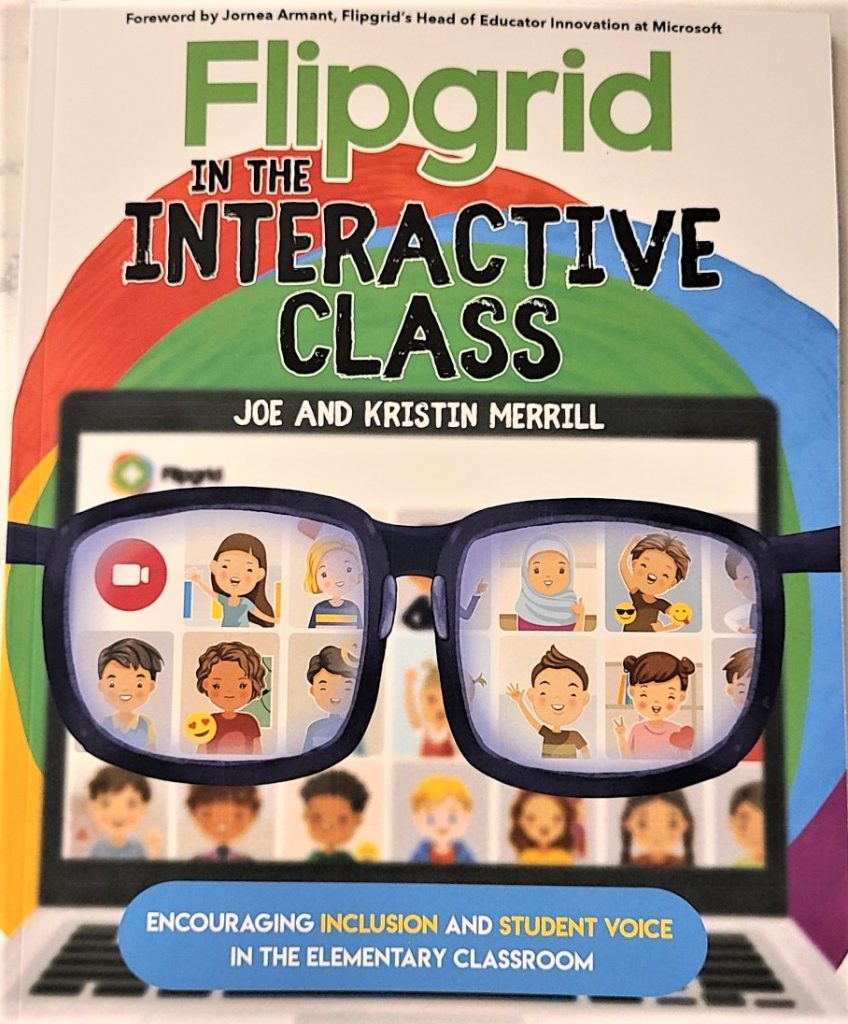Project Post #3

This week brought more success with Flipgrid in my classroom. We all completed introductory videos so our partner class could view them and learn a little bit more about us. Many students did not completely understand how another class would be interacting with us, but once we watched the introductory videos from Chris B’s health class they had more questions about the process. Can the other students see our videos like we can see theirs? Do we have permission to watch their videos? Which brought the question, do they have permission to see us? This ignited a super digital citizenship discussion and how our school division requires permissions from every child’s adult before we can go on field trips, use technology, have our pictures taken, release images/videos and so on. We discussed how important it is to create a safe space for students to express themselves digitally and that creating a positive digital footprint is essential so what others see online about us is interesting, informative, and appropriate.
In the article Why children should be taught to build a positive online presence, there was mention of a project called The “Best Footprint Forward” which explored what children know about digital footprints. Focus groups were made up of 33 children aged 10-12 years from three schools and analysis of the focus groups reveals that children have strategies to keep safe online, but they need further guidance on how to build a positive digital footprint. I found the student responses in the “Findings” section very interesting! We aim to protect children but we should be proactive and empower them to take control of their digital identity at an early age. Playing games online with friends is different in many ways, but how we conduct ourselves and treat others translates into how we create our own digital footprints and the story they tell. This is an important focus for me each year and we spend a good deal of time exploring the concept of valuable digital citizenship.
In one of my student’s videos, he actually mentioned he is making his video because he has to for this class project. The idea that he ‘had to’ do this really resonated with me. I did not even think for one second to ask if they wanted to create a video. As with most things when we plan to teach children, we are the decision makers. I checked all of the permissions and that was that!
This week, I created a Flipgrid literacy center to make it easier for the students to complete a task independently. They now have a personal log in card with their usernames and passwords for each program we use, and logging in and out of Clever and Flipgrid is going very well!

The consistent work over the past couple of weeks is paying off. I purposely left off a couple of personal passwords to teach them the importance of privacy. Their job is to remember them. So far so good!
Next week we will continue using Flipgrid in a Literacy Center but I may change the topic to accommodate another subject area. I am currently exploring a new book that I purchased called Flipgrid in the Interactive Class by Joe and Kristin Merrill. It came highly recommended! My goal for the coming week is to incorporate at least one idea from this book or from the following helpful articles.

https://www.edutopia.org/article/9-new-ways-use-flipgrid-classroom
https://static.flipgrid.com/docs/Flipgrid_k12_community.pdf
If anyone has a cool idea they have used with Flipgrid I would love to hear about it! I appreciate the tried and true perspectives!
My kids are excited to meet yours in a live virtual environment. Let’s make it happen next week!
Yes sounds awesome! Let’s do it!
HI Lynnette,
I really love this idea that you are utilizing this online media tool in connection with another colleague. Such a fun and interactive way to share and grow simultaneously. I am a high school math teacher, and I am intrigued to perhaps try flipgrid with word problems and decoding, but I am not exactly sure yet how this could unfold, but I am invested to see how you use it more in your classroom because it may help me unlock some ideas for myself.
Thanks for sharing!
Thanks Chris, I am learning that there are many topics of interest and live events to use with Flipgrid. I hope my Project Post 4 can help a bit. I haven’t searched any topics of interest beyond my grade level but they are out there!
Hi Lynnette- Great to hear about the digital citizenship discussion that was spurred! I love to hear when students are thinking about, and asking about, digital citizenship.
I’ve used Flipgrid with my grade 8 students, often as one of several options to share their learning. They may be recording themselves rather than a traditional presentation in front of the class, using it as a way to explain what different parts of a project represent, or using it as a way to record and hand in a skit or production. I’ve found it to be very versatile and easy to work with on the teacher’s side. Here’s hoping it works great for you as well!
This is super helpful and I’m so glad I just read this! I will be teaching Grade 7 and 8 Science and Health in my new role as Vice-Principal at St. Gabriel. I think if I use it as a tool for students to introduce themselves to me, they can do so without or with a mask and I will be able to get to know them much faster.